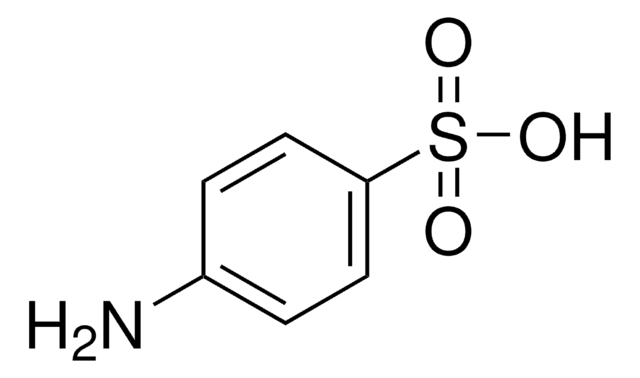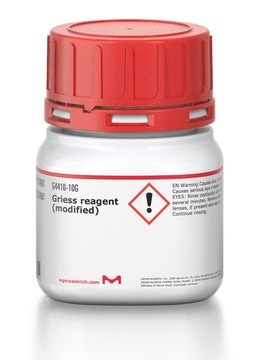38497
Nitrate Reagent A
suitable for microbiology
Synonym(s):
1-Naphthylamine solution
About This Item
Recommended Products
product line
BioChemika
Quality Level
shelf life
limited shelf life, expiry date on the label
composition
acetic acid 5 N, 1000 mL
α-naphthylamine, 5 g
technique(s)
microbe id | metabolite detection: suitable
application(s)
agriculture
clinical testing
environmental
food and beverages
pharmaceutical
microbiology
suitability
Enterobacter spp.
Neisseria spp.
anaerobic bacteria
bacteria
SMILES string
Nc1c2c(ccc1)cccc2
InChI
1S/C10H9N/c11-10-7-3-5-8-4-1-2-6-9(8)10/h1-7H,11H2
InChI key
RUFPHBVGCFYCNW-UHFFFAOYSA-N
General description
signalword
Danger
hcodes
Hazard Classifications
Eye Dam. 1 - Skin Corr. 1B
Storage Class
8A - Combustible corrosive hazardous materials
wgk_germany
WGK 1
flash_point_f
Not applicable
flash_point_c
Not applicable
ppe
Faceshields, Gloves, Goggles, type ABEK (EN14387) respirator filter
Choose from one of the most recent versions:
Already Own This Product?
Find documentation for the products that you have recently purchased in the Document Library.
Customers Also Viewed
Articles
Vibrios are motile, curved or comma-shaped bacilli and have a single polar flagella with sheet proteins. They are often found in open water, freshwater and saltwater.
There are many other methods of detection to indicate the presence of E. coli. Review common tests and biochemical reactions for this contaminant.
Specific agars and broths support detection and cultivation of Campylobacter, requiring complex media with essential supplements.
For microbiologists the most fundamental stain was developed in 1884 by the Danish bacteriologist Hans Christian Gram.
Our team of scientists has experience in all areas of research including Life Science, Material Science, Chemical Synthesis, Chromatography, Analytical and many others.
Contact Technical Service














